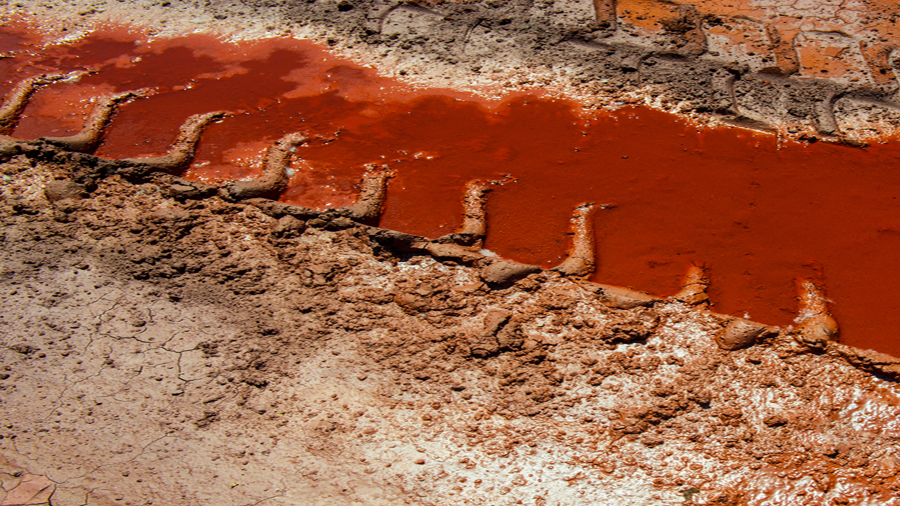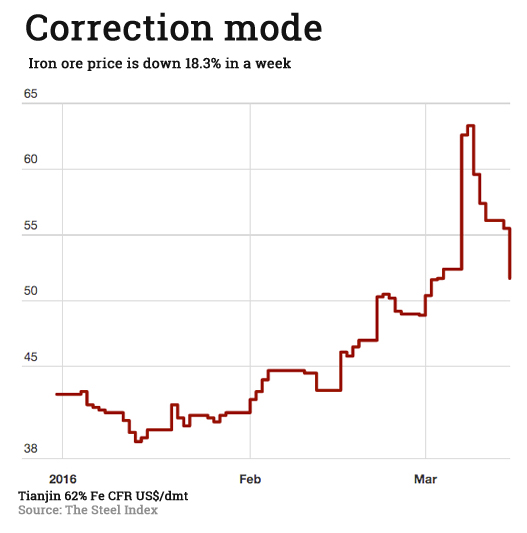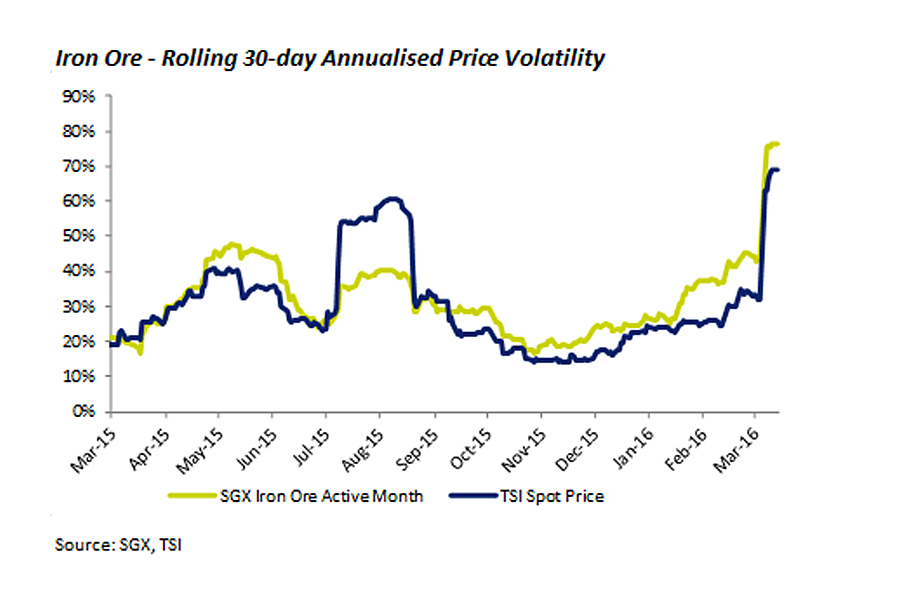Iron ore price correction in full swing

The rally in the price of iron ore went bust on Tuesday with the Northern China benchmark import price falling nearly 7%.
The steelmaking raw material was trading at $51.70 per dry metric tonne CFR Tianjin port on Monday, down $3.8o compared to Monday according to data supplied by The Steel Index.
The steep backwardation of the forward curve enables end-users to lock-in future prices well below spot levels

Iron ore is now down 18.3% from a high above $63 struck last week following an insane one-day rally.
The commodity remains in a bull market for 2016 with a 20.5% rise year to date and a 39.7% jump from near-decade lows reached mid-December.
Adrian Lunt, head of commodities research at the Singapore Exchange says volatile iron ore prices coupled with an uncertain macroeconomic backdrop appear to be inducing greater hedging demand.
SGX was the first to launch iron ore derivatives in April 2009 and so-called open interest – a measure of market participation – has surged to an all-time high in recent days according to data from the exchange.
The iron ore market has also gone into backwardation, an unusual situation where spot price are higher than futures prices. Lunt says the steep backwardation of the forward curve enables end-users to lock-in future prices well below spot levels:
“Meanwhile, the recent price spike has enabled producers to secure higher prices in the near months. Year-to-date, forward prices for 2016 remain up over 20%, while the back end of the forward curve has seen a moderate decline. In the past, the premise had always been that low-cost supply growth would displace higher-cost production, and this has to a large extent been occurring.
“Moving forward, however, as the industry cost curve flattens and adoption of derivatives increases, such a premise may not materialise quite as simplistically as expected as a number of producers take advantage of price spikes to lock in higher forward prices. In short, rising industry adoption of iron ore derivatives has added a new tactical dimension to price risk management.”

{{ commodity.name }}
{{ post.title }}
{{ post.date }}




Comments